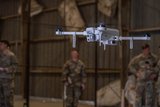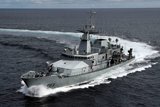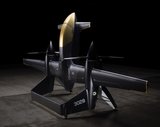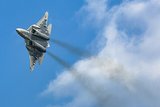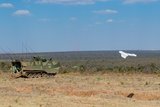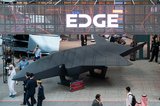Polish Navy’s AW101 takes first flight
The versatility of the AW101 platform permits customers to configure the helicopter for a wide range of primary and secondary roles. (Image: Leonardo)
Leonardo celebrates as the Polish Navy’s first AW101 flies for the first time from the company’s site in Yeovil on 19 July 2021.
The flight demonstrated functional checks of the main airframe systems as well as the control system. Engine-handling checks were taken through to monitor the speed range of the aircraft.
There are more tests exploring the bespoke mission equipment fitted to the aircraft.
The AW101 will perform a range of missions for the Polish Naval Aviation Brigade including ASW and CSAR.
It will be equipped with the most modern mission systems, including autopilot with SAR modes, data transmission system, tactical navigation system and protection and defence systems both passive and active.
The AW101 features a tactical radio, reconnaissance radar, an observation head (FLIR), an S-mode transponder and a 12.7mm machine gun.
According to Shephard Defence Insight, Poland signed a deal to procure four AW101 helicopters with four options for CSAR and ASW missions in April 2019.
The helicopters are expected to replace the country’s Mi-14 ‘Haze’ ASW helicopters and SH-2G Super Seasprites in service with the Navy. The contract is valued at $430 million.
Related Equipment in Defence Insight
More from Air Warfare
-
![Embraer’s C-390 Millennium and Saab’s Gripen E complete air-to-air refuelling test campaign]()
Embraer’s C-390 Millennium and Saab’s Gripen E complete air-to-air refuelling test campaign
The certification strengthens the ongoing collaboration between Saab and Embraer and bolsters the interoperability of the two aircraft.
-
![Dubai Airshow 2025: Embraer explores new systems and CUAS missions for Super Tucano]()
Dubai Airshow 2025: Embraer explores new systems and CUAS missions for Super Tucano
Embraer foresees high demand for its A-29 Super Tucano over the next two decades, with discussions about adding newer systems to the aircraft already underway.
-
![Dubai Airshow 2025: Anduril and Edge joint venture unveils Omen tailsitter UAV]()
Dubai Airshow 2025: Anduril and Edge joint venture unveils Omen tailsitter UAV
The Group 3 UAV has also netted its first order from the UAE for 50 platforms, with full-scale production scheduled for 2028.
-
![Russian fighter jet exportability threatened by sanctions, says think tank]()
Russian fighter jet exportability threatened by sanctions, says think tank
The think tank realised its report just days before the Dubai Airshow, where the Su-57E Russian fighter jet and Yak-130M trainer and light attack aircraft will make their Middle Eastern debuts.
-
![Analysis: South American domestic drone programmes fly high]()
Analysis: South American domestic drone programmes fly high
While South American militaries will continue to import drone technology from extra-regional suppliers, the successful test of a locally manufactured kamikaze drone by the Brazilian Navy demonstrates the rising role of “made in South America” systems.
-
![UAE: Domestic industries set to dominate the country’s $5.24 billion UAV market]()
UAE: Domestic industries set to dominate the country’s $5.24 billion UAV market
The UAE is the second-highest spender on uncrewed aerial vehicles in the Middle East and the 15th-highest spender on the capability globally.







